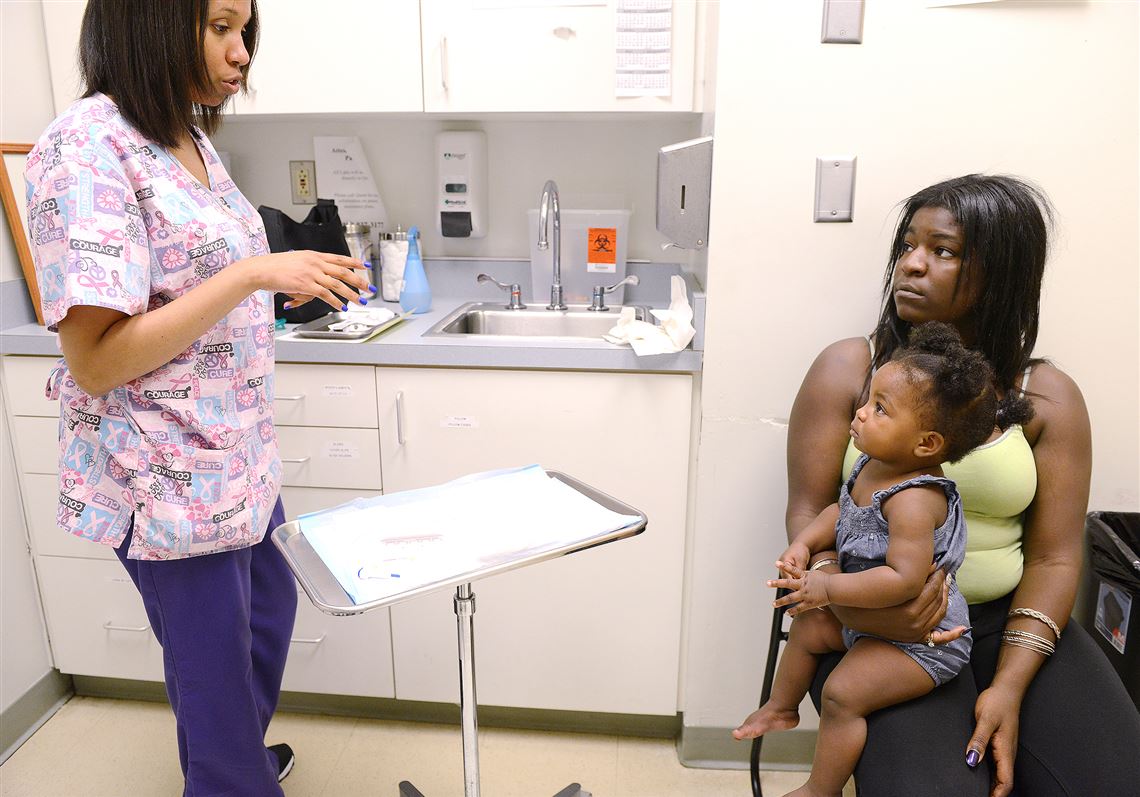In the ongoing fallout from the lead poisoning of the Flint, Mich., water system, a proposed bill in the Pennsylvania Legislature would mandate testing all children under age 6 for lead.
Given that lead is a powerful neurotoxin that can cause harm to children even at minute levels, the Allegheny County Health Department’s director, Karen Hacker, thinks that is a good idea.
But if the state does not act this year, Dr. Hacker wants the county to consider its own program to require testing kids for lead in Allegheny County, something she will discuss with the county board of health at a meeting Wednesday.
Increased testing is needed “particularly in Allegheny County” she said, “given that we have a county where 80 percent of the housing stock was built before [lead in house paint was banned] in 1978. We should be looking for where the hot spots are and determine where we should focus.”
Though the Flint case focused on lead levels in water, the way most children get lead into their systems is by being exposed to lead-based paint or dust, which is found most frequently in older homes in poorer neighborhoods.
The percentage of kids under 6 in Allegheny County with elevated lead in their blood is slightly below the state average — 7 percent in the county compared with 9 percent for the state in 2014.
But Dr. Hacker fears that not enough kids who need to be tested are getting tested in the county for a variety of reasons, including that not all parents are offered the less-invasive capillary testing method.
In capillary testing, also known as the “stick” test, a pediatrician or nurse simply pokes the end of a child’s finger to draw a small amount of blood.
It has one huge advantage over venous testing, where blood is drawn from a vein, said Scott Tyson, CEO of Pediatrics South and a practicing pediatrician: “Try doing a venous puncture on a 1 year-old. They’re squirmy little characters anyway, but when you have to have a parent hold them down [to withdraw the blood] it can be awful.”
Capillary tests, though, can result in false positives, so, it effectively works as a screening tool for elevated lead levels: If your child tests high for lead in a capillary test, you will have to have a venous test to confirm the results. But that means that 90-plus percent of children in Allegheny County would not have to have blood drawn by a needle for lead testing if they all had capillary tests.
For all those reasons, Dr. Hacker said, “I’d like to see more pediatricians’ offices offer capillary testing. I think it would encourage more parents to test their kids.”
The problem is few of the county’s pediatricians offer a capillary test in their office. Many send clients out to be tested at off-site laboratories, such as Quest Diagnostics or hospital-based clinics. That adds another step, and another appointment, to the process, something that Dr. Hacker and others believes keeps some parents from getting their kids tested.
Edward Ketyer, a pediatrician with Pediatric Alliance who works in offices in McMurray and Bridgeville, said his office recently started having its own staff perform a capillary blood draw.
“We did it because what we found is that we’d write a prescription for people to go to the [outside] lab [for] 1-year-olds and 2-year-olds, and they wouldn’t go,” he said.
Having staff do the less invasive test in-house during regular checkups ensures that they will get the test done, he said.
In his offices, they currently test only those children who are high-risk, based on a questionnaire parents fill out that asks questions such as the age of their home or whether they work in certain fields that would expose them to lead.
Dr. Tyson said his office looked into purchasing the equipment to do in-office capillary testing. “But its cost [about $4,800] plus the additional testing equipment means it would take about five years for it to pay itself back” based on the average rate of reimbursement, he said.
Both Dr. Tyson and Dr. Ketyer said they supported Dr. Hacker’s call for universal testing, and agreed that providing capillary testing at the office would help make that happen. But the county or state would need to find a way to make it financially feasible for pediatricians to do this, they said.
“Unless [pediatricians] get some help buying the machines, they’re not going to do it,” said Dr. Ketyer, who noted that his office does the testing now even though it makes little to no money on the test based on insurance reimbursement.
Dr. Hacker said the state Department of Health has told her that all lead tests are covered either by state Medicaid or private insurance plans.
Representatives of four of the largest insurance plans operating in Allegheny County — Aetna, Cigna, Highmark and UPMC Health Plan — all confirmed that they do cover both capillary and venous lead testing.
Still, some pediatricians do not believe a countywide requirement on lead testing is necessary.
“To mandate that countywide or statewide might not make sense” since some communities have few to no elevated lead findings in kids, said Scott Serbin, a pediatrician who runs a house call practice in the northern part of Allegheny County. “But it might make sense citywide” where the housing stock is older.
He points out that the federal Centers for Disease Control and Prevention — as well as the American Academy of Pediatrics — does not recommend universal testing because elevated lead levels in children have come down so much over the past three decades.
The CDC and the AAP do recommend testing high-risk kids based on questionnaires or an analysis of where they live. That’s why three years ago the federal Medicaid system changed its policy from testing all kids on Medicaid to just those who were high-risk.
That was before the Flint case, where hundreds of kids were found to have elevated lead levels after the water there was improperly treated.
“I think [lead levels in kids] had been a non-issue for a while,” said Jennifer Preiss, a pediatrician with Greentree Medical Associates, part of the Allegheny Health Network. “But I think the whole Michigan thing really brought it back, and now we should be discussing this.”
Sean D. Hamill: shamill@post-gazette.com or 412-263-2579 or Twitter: @SeanDHamill.
First Published: July 11, 2016, 4:00 a.m.

















